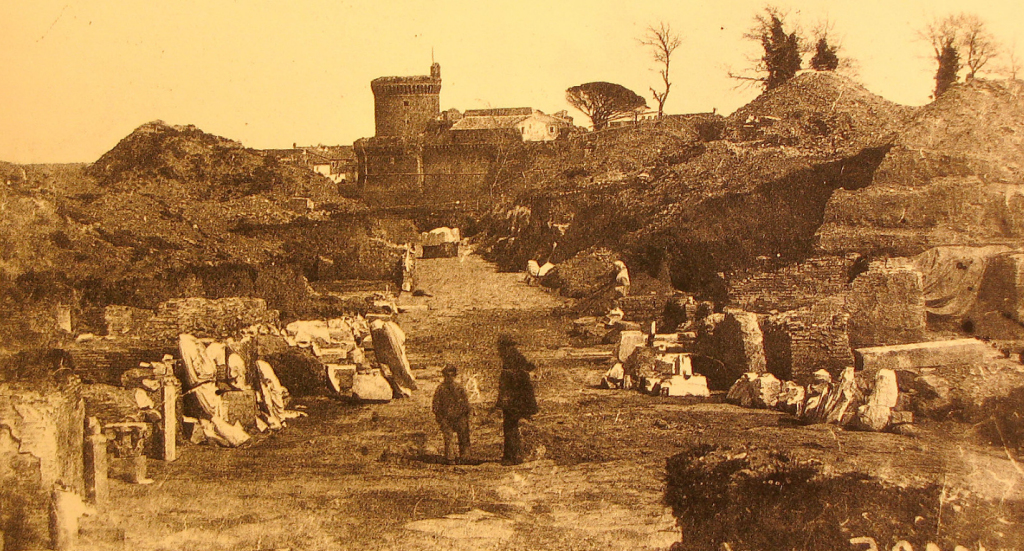The history of the ruins of Ostia is long and complicated. It is the story of barbarian invasions and raids by pirates, of a visit by Richard the Lionheart or Coeur de Lion, of popes who owned the site and started searches, and of digging aristocrats. The archaeologists and historians studying the harbour of Rome do not just work with what can be seen today. They also work their way through old manuscripts and engravings, in the hope of finding more information about the early searches. For a long time Ostia did not have its own museum, and the finds ended up in dozens of museums elsewhere and in private collections: in Italy especially in the Vatican Museums, but also in other European countries and in North America. Often no more is known than "Found in Ostia", sometimes with the period of excavation. Many objects must still lie hidden in the storage rooms of museums and in private collections. The ruins of Ostia are relatively well preserved. The city was not buried below a living and changing city, like ancient Rome. The modern village Ostia Antica, with mediaeval roots, is situated to the east of the ancient city.

A photo of ruins of Ostia taken in 1855. In the background is the 15th century castle in the medieval village Ostia Antica.